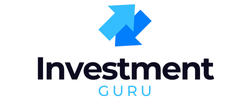Refinancing a mortgage can be a smart move to lower your monthly payments, shorten your loan term, or even free up cash for other financial goals. But the upfront costs—often thousands of dollars in closing fees—can make homeowners hesitant to take the leap. That’s where a no closing cost refinance comes in. At first glance, it sounds like the perfect solution: refinance your mortgage without paying those hefty fees out of pocket.
However, as with most financial products, the reality isn’t quite that simple. While this option can save you money upfront, it usually comes with trade-offs, such as a higher interest rate or a larger loan balance. Understanding these pros and cons is crucial before deciding whether a no closing cost refinance fits your situation.
In this article, we’ll break down exactly how a no closing cost refinance works, the potential benefits, and the hidden costs you need to watch for. We’ll also explore who should consider this strategy—and who might be better off sticking with a traditional refinance. By the end, you’ll have a clear picture of whether this mortgage option aligns with your financial goals.
If you’ve been wondering whether skipping closing costs is a shortcut to saving money or a hidden long-term expense, this guide will help you make an informed decision.
Table of Contents
What is a No Closing Cost Refinance?

A No Closing Cost refinance allows you to refinance your mortgage without paying the typical upfront fees. Normally, closing costs include appraisal fees, lender origination charges, title insurance, credit report fees, and more. These can amount to 2%–5% of the loan amount, according to the Consumer Financial Protection Bureau.
With a No Closing Cost refinance, your lender either covers the fees in exchange for a slightly higher interest rate, or they roll the closing costs into the balance of your loan. Essentially, you avoid the upfront expense but may pay more in the long run through increased interest or principal.
How Does It Work?
- Higher Rate Option: The lender absorbs the fees but raises your mortgage rate. You avoid out-of-pocket expenses today but could pay more over time.
- Rolled-Into-Loan Option: Closing costs are added to your new loan balance, increasing the amount you owe but keeping your rate the same.
The Pros of No Closing Cost Refinance
Here are the biggest benefits of a No Closing Cost refinance:
- No Upfront Cash Required: Ideal if you want to conserve cash for emergencies, investments, or home repairs.
- Immediate Monthly Savings: Even with a slightly higher rate, refinancing can lower your monthly payment.
- Faster Break-Even Point: Because you’re not waiting to “recoup” closing costs, the refinance pays off sooner if you plan to move in the short term.
- Flexibility: Good for homeowners who don’t plan to stay in their home for more than 5–7 years.

The Cons of No Closing Cost Refinance
Of course, there are also trade-offs:
- Higher Interest Rate: Lenders make up for waived costs by charging you more over time.
- Reduced Long-Term Savings: If you stay in your home beyond the break-even point, higher interest payments might cost more than traditional refinancing.
- Bigger Loan Balance: Rolling in costs increases your principal, which means paying interest on those costs too.
- Limited Options: Not all lenders offer true No Closing Costt loans, and those that do may restrict eligibility.
Comparison Table: Traditional vs. No Closing Cost Refinance
| Feature | Traditional Refinance | No Closing Cost Refinance |
|---|---|---|
| Upfront Costs | 2%–5% of loan amount | $0 upfront |
| Interest Rate | Lower | Slightly higher |
| Loan Balance | Smaller (costs are paid upfront) | May be larger if fees are rolled in |
| Best For | Long-term homeowners | Short- to medium-term owners |
Who Should Consider a No Closing Cost Refinance?
This strategy isn’t one-size-fits-all. It makes sense for certain homeowners based on financial goals and time horizon:
- Short-Term Homeowners: If you’ll sell or move in 3–7 years, avoiding upfront costs often saves you money.
- Rate Shoppers: Even a slightly higher rate can still yield savings if you’re refinancing away from a very high original rate.
- Cash-Conscious Borrowers: If you don’t want to dip into savings, a No Closing Cost option preserves liquidity.
- Those Seeking Flexibility: Ideal if you want lower payments right away while planning further real estate moves strategically.
Step-by-Step: How to Apply for a No Closing Cost Refinance
- Check Your Credit Score: Most lenders prefer scores of 620 or higher, but 740+ will qualify you for better interest rates.
- Gather Documents: Include recent pay stubs, tax returns, bank statements, and your current mortgage statement.
- Compare Lenders: Request loan estimates from at least 3 lenders. Look closely at the interest rate vs. upfront costs trade-off. Use calculators like those provided by Investopedia.
- Evaluate Long-Term Costs: Ask for amortization schedules so you can see total payments over different holding periods.
- Lock Your Rate: Once you find a favorable offer, lock in your interest rate to protect against market fluctuations.
- Close the Loan: Sign your paperwork electronically or in person. Ensure the final disclosures match what was promised.
Costs and Setup Considerations
Although you avoid upfront closing costs, lenders still receive compensation for processing the loan. Expect:
- Higher Ongoing Interest: Rates may be 0.125%–0.25% higher.
- Lender Credit Adjustments: Costs are offset by lender credits incorporated into your rate.
- Prepayment Planning: If you intend to sell or refinance again soon, the higher rate may not matter.
Key Takeaway: Align Strategy With Timeline
The core decision revolves around your time horizon. The longer you keep the loan, the more expensive a No Closing Cost refinance becomes. The shorter your stay, the more beneficial it is.
Frequently Asked Questions About No Closing Cost Refinance
- What counts as closing costs?
They include application fees, appraisal, origination charges, title work, escrow, and more. - Do No Closing Cost refinances really cost $0?
No. You won’t pay upfront, but you’ll cover costs indirectly via your loan balance or higher interest rates. - Is this option available for FHA or VA loans?
Yes, many lenders allow No Closing Cost refinances for FHA, VA, and USDA loans, though restrictions apply. - How much higher is the interest rate normally?
It’s often one-eighth to one-quarter of a percent higher than a comparable loan with closing costs. - Does this affect my ability to refinance again later?
No, you can refinance again, though multiple refinances may reduce long-term savings. - Can I deduct rolled-in closing costs on taxes?
No, generally only mortgage interest is deductible. Rolled costs become part of your loan balance, not a tax-deductible expense. - How do I calculate my break-even point?
Divide total costs saved upfront by the monthly difference in payments between loan options. - Will a No Closing Cost refinance increase my monthly mortgage insurance?
If you roll costs into the principal, it may increase monthly PMI payments until you reach 20% equity. - Do I still need an appraisal?
Most lenders require one, though some waive it if you qualify for an appraisal waiver based on property data. - Is this strategy recommended for investment properties?
Yes, especially if you plan to sell or refinance within a short window. It keeps more liquidity free for other investments.
Conclusion
Deciding on a No Closing Cost refinance comes down to weighing short-term convenience against long-term costs. The pros and cons of No Closing Cost refinance vary depending on your financial goals, how long you’ll stay in your home, and current interest rates. If your aim is to minimize upfront costs, it’s a highly effective tool. But if you’re committed to your home for the long haul, paying closing costs upfront may yield more in savings. The best step is to compare offers from multiple lenders and run the numbers carefully before committing.
Action Step: Begin today by requesting 3–4 refinance quotes. Use free calculators to model different scenarios and determine your break-even point. Align the refinance structure with your length of homeownership, and you’ll maximize the personal financial benefit.


